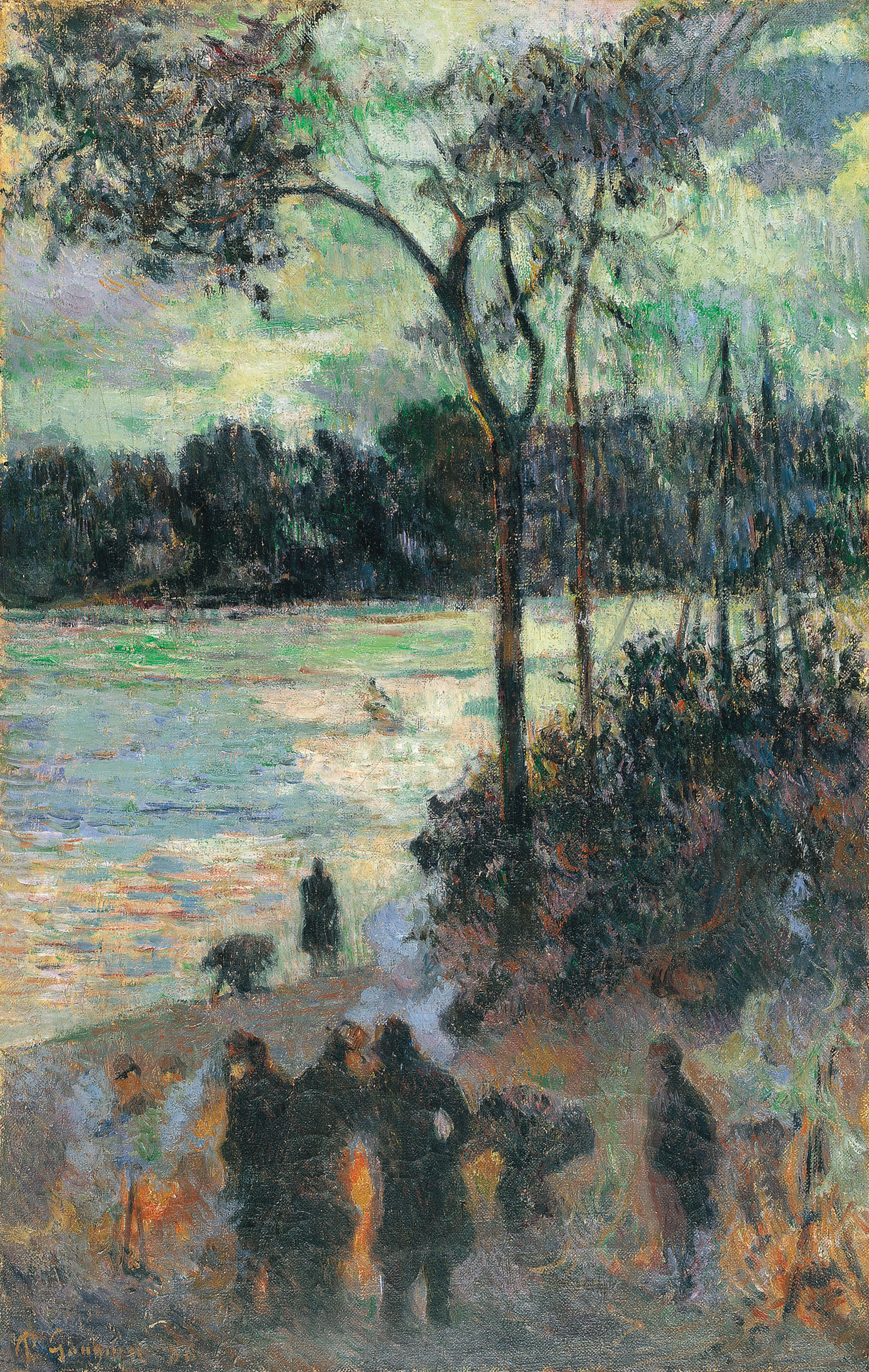art-Gauguin.com
Paul Gauguin 1848-1903
Paul Gauguin - Fire by the water 1886
 Fire by the water |
From Thyssen-Bornemisza Collection:
Certain pictures readily conform to the prevailing view of an artist's oeuvre at a particular moment in his career. Others-odd-ones out, so to say-strike a different note from the usually accepted view: eccentric and nonconformist. Our conception of Gauguin in Pont-Aven in 1886-his first visit to Brittany-is dominated by landscapes of the locality whose "Breton-ness" is not unduly exaggerated. An unspoilt, pastoral ambience could be mistaken for a rural idyll, especially when, in introducing figures, Gauguin presents us with picturesquely costumed young women of Pont-Aven.
This strange, almost malevolent painting has acquired a rather misleading title. The landscape element does not immediately and unequivocally proclaim a Pont-Aven provenance. A hillside declines to the bank of a river, on which the masts of two sail-boats can be discerned, with a glimpse of the far bank, and just a little sky. And rather than the quaintly costumed Bretonnes, all the actors in this enigmatic drama are male. Men whose caps, at least in three instances, suggest douaniers are gathered around mysterious fires that burn not far from the river's bank. In a sketchbook used by Gauguin in Brittany in 1886 is a sequence of five consecutive pages in which highly schematic drawings of douaniers and other male figures can be seen-as well as a skeletal compositional sketch. Several of these hastily executed figures reappear in the painting. The adapted Impressionist morphology of brushstroke and colour articulation typifies Gauguin's style during his three months' stay in Pont-Aven. In that respect, the painting qua painting conforms to our expectations. What was thematically aberrant (a cause of contraband?) turns out to be stylistically conformist.
Ronald Pickvance